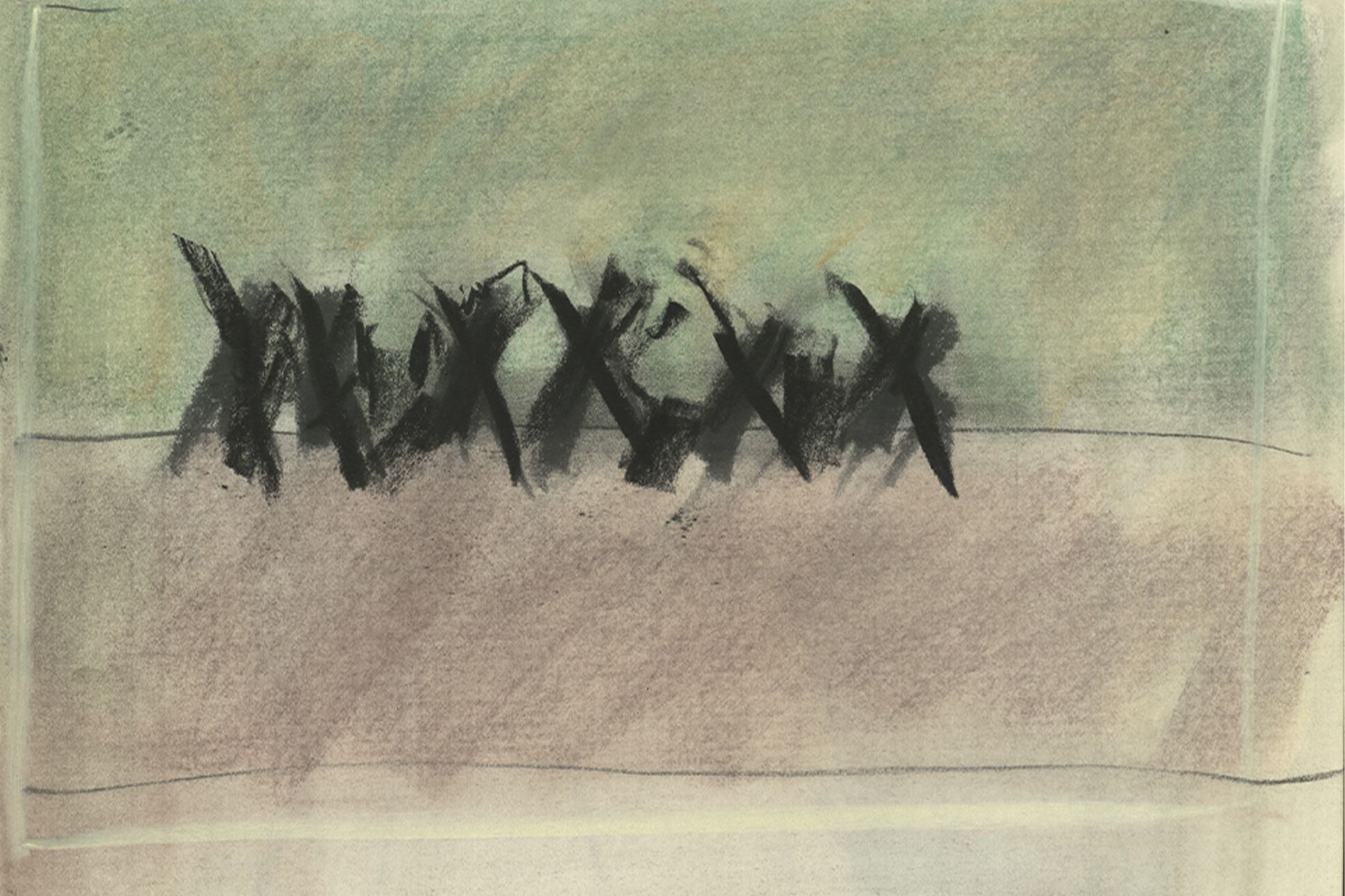Outside, in the Theater
Norma Cole and the poetics of place.

Norma Cole, drawing from a notebook, undated, Norma Cole Collection, 1987-2014, The Poetry Collection of the University Libraries, University at Buffalo, The State University of New York.
Sometime in the late 1980s, Rosemary Waldrop was to give a series of talks during a residency that I curated at Intersection for the Arts in San Francisco. In advance, she sent me a number of Burning Deck Chapbooks, which were elegant and beautifully letter-pressed. I asked Norma Cole to create an artwork for Intersection’s gallery that honored Rosemary’s talents. I loved Norma’s paintings, which I had seen in her studio at Hunters Point, and I purchased one that hung in the hallway outside our offices at Intersection. I recall Norma entering the gallery and approaching a table where the chapbooks where stacked. She began tearing off the covers, creating on the wall a number of collages that were small, delicate, and bewitching, promoting questions that the composition triggered. Questions related to sight, to letters, to audience.
While at Intersection, I took great pleasure in presenting new voices to the San Francisco arts community, often by inviting an emerging writer to give a reading with an established writer in a space where art as visual and performative realities were embraced. Most of the time it worked. Norma contributed to Intersection, with influences from New College of California, where a school of Poetics, inaugurated by Robert Duncan, then encouraged a range of students to look at poetry and its historical and social contexts. A few blocks over on 24th Street, New Narrative writers gathered at Small Press Traffic. They were armed with a poetics that was cavalier, richly unhinging the status quo, and they were suited to my curatorial taste. I hosted many readings at Intersection from members of these literary communities, because of the push and pull in their explorations.
I often thought of my job at Intersection as a connector, a contributor to a “tipping point” moment in an artist’s career or a publisher’s effort to establish themselves or expand their audience. I loved working with independent publishers whether it be through the local efforts of Tombouctou Books, Tuumba, MOMO’s Press, City Lights, North Atlantic Books, Kelsey Street Press, the Figures, or, beyond the Bay, Copper Canyon, Coach House, Graywolf, and Burning Deck. I also worked with the editors of these presses, and so I would present group readings associated with the important little magazines and newsletters then extant: ACTS, Five Fingers Review, Jimmy and Lucy’s House of K, Mirage, No Apologies, Soup, Little Caesar, Ottolole, and HOW(ever).
How fortunate I was to be part of a dynamic community of diverse poets before AIDS altered our lives. Norma Cole, Laura Moriarty, Edith Jenkins, Susan Gevirtz, Kathleen Fraser, Mary Margaret Sloan, Jean Day, Beverly Dahlen, Leslie Scalapino, Dodie Bellamy, Camille Roy, and many others formed the fabric of our social collaborations. I found in their poetics an understanding of the “outside”: the gender outside, the class outside of mainstream culture and mainstream writing.
I was then, and am now, compelled by the poetics of place-making, place-knowing, and place-keeping that enlivens the collective. Place and the stage—the Poets Theater maxim of “giving up of the property of the self.” I was the stage manager who introduced the reader and the house manager, ever mindful of the drunk or rambling soul who would enter the building to check out the event. When Norma was in the audience, I observed her listening. It was a barometer for me of what was intersecting—the lyric, the story, the exploration, the vertigo prompted by words, the sound of the street, the rustle of folks adjusting their posture, the quiet mind of the critic or the disinterest of the listener.
Roberto Bedoya is a poet whose work has appeared in numerous publications, and an art consultant, with projects for Creative Capital Foundation, the Ford Foundation, The Rockefeller Foundation, and the Urban Institute.


